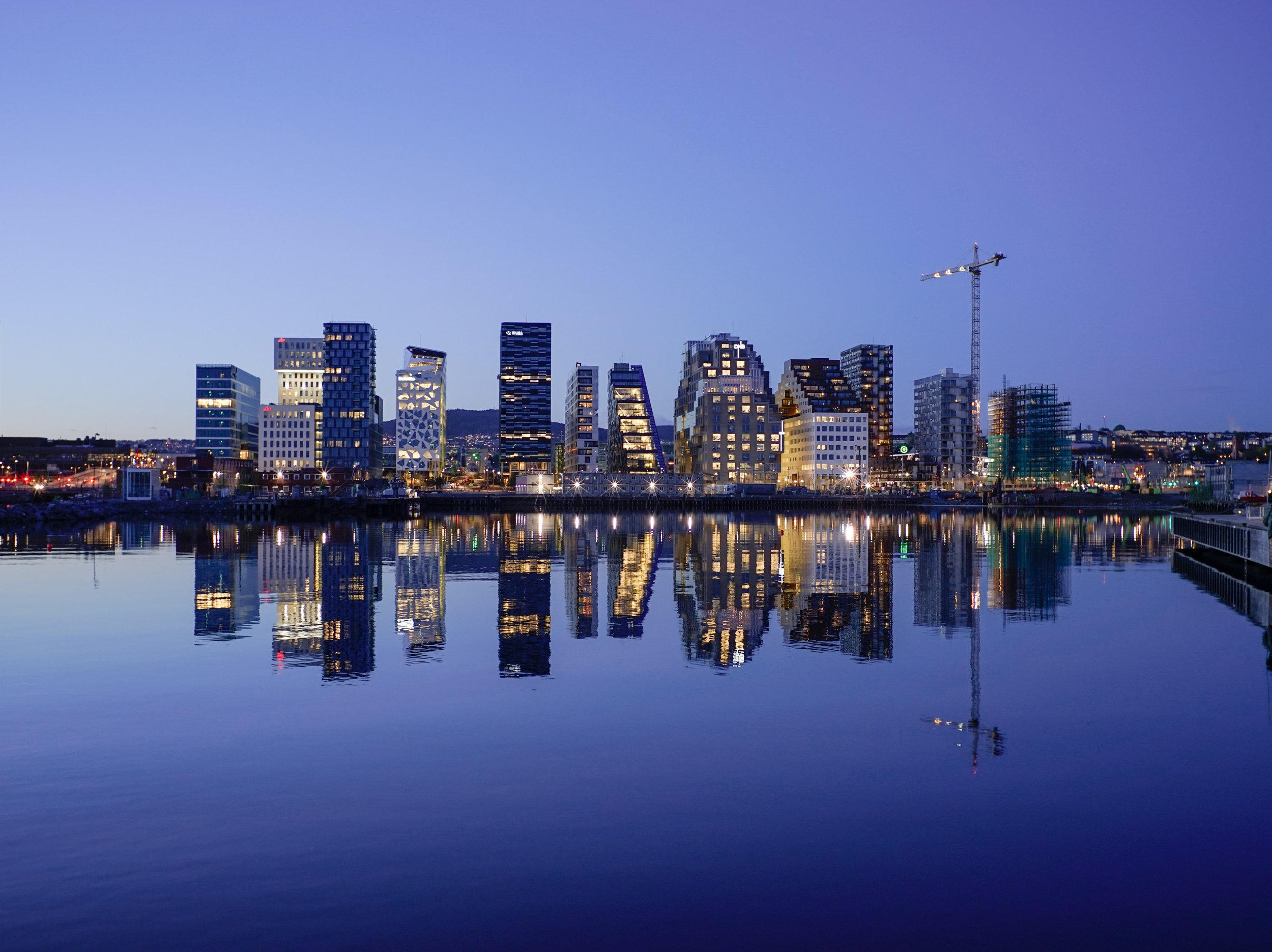The World's Most Sustainable Cities
The World’s most sustainable cities
27 Decemeber 2022
With the global population expected to rise to 10.4 billion by 2100, it is important that cities will be able to cater for more people whilst simultaneously focusing on sustainability. Currently, over 70% of global greenhouse gas emissions come from cities, therefore it is imperative they focus on emissions reductions, as well as other policies and innovation to help towards sustainability. Let’s take a look at some cities around the world and how they are playing their part to improve sustainability.
Oslo, Norway
Oslo was the European Green Capital in 2019 and the most sustainable city from Arcadis’s Sustainable Cities Index. This city is leading the way for emissions reduction, with the inspirational goal of reducing emissions by 95% by 2030 compared to 1990 levels. It produces the most renewable energy in Europe, predominantly in the form of hydroelectricity. Oslo even had the world’s first zero emissions construction site, using only electric machinery, which is impressive given that globally the construction sector is responsible for over a third of emissions. Oslo has also implemented cheaper parking for electric cars, and some areas of the city are only accessible to low-emission vehicles. Furthermore, it has a sophisticated waste management system and is rich in biodiversity, with parks and forests making up over half of the city.
Curitiba, Brazil
Although Curitiba did not make it onto Arcadis’s Sustainable Cities Index, it is worth taking a look at its transport system because the city faced rapid growth in the 1960s, so it was pushed to effectuate sustainable infrastructure. The roads in Curitiba are wide enough for separate bus and car lanes which reduces congestion, and busses in the centre often arrive every 90 seconds. Bus tickets are priced affordably so that everyone has access, and to speed up the process, people wait in elevated bus stops where they pay before entering, so buses only take 15-19 seconds at each stop. This fast, accessible and low-congestion transport system could be useful for other cities as populations grow.
Tokyo, Japan
Tokyo ranks number 7 in both the planet and people index of Arcadis’s report, and it plans to build a mini ESG city in its bay area. The Tokyo Metropolitan Government will have limited barriers in implementing new infrastructure because nobody currently lives on the land that they plan to work on. It is hoped that this new area will be a hub for clean tech companies testing new ideas, to whom they are offering subsidies for starting and growing businesses. Tokyo has some other ambitious sustainability plans for 2030 , such as a 50% reduction in greenhouse gas emissions, 40% reduction in plastic waste and 100% reduction in the sale of new gasoline powered cars and motorbikes.
Bogota, Colombia
Bogota is the only developing city to make it to Arcadis’s top 40 cities in their planet pillar. In 2016, Bogota launched the District Development Plan, whereby each month representatives including environmental secretaries, school students, health secretaries and others come together to discuss the city’s development in line with the United Nation’s Sustainable Development goals. Bogota has a bus system called the TransMileno, similar to Curitiba in the way that busses have their own lanes to reduce congestion. Enrique Penalosa, former mayor of Bogota stated; ‘a developed society is not where the poor drive cars, but where the rich use public transportation’. Cycling has also become a major feature of transport in Bogota, with a weekly city-wide cycle event called Ciclova, which encourages people from both richer and poorer districts to get involved with cycling.
Copenhagen, Denmark
On the theme of cycling, Copenhagen is sometimes called ‘city of cyclists’ because of its progressive cycle infrastructure. In this way, Copenhagen has made the most sustainable form of transport the easiest one, with 56% of cyclists stating that they cycle because it is convenient. Copenhagen has been placed fourth on Arcadis’s planet pillar, and third in its people pillar. In the face of rising temperatures, Copenhagen has introduced a sustainable district cooling system, which uses the sea to cool water before it is distributed via pipelines. This leads to a 70% reduction in carbon dioxide emissions compared to average cooling systems. It also has a combined heat and power system which captures heat energy from electricity generation which would otherwise be wasted.
As the sustainability agenda is becoming increasingly prevalent across the world, we are seeing more and more cities take on challenges such as emissions reduction targets, sustainable transport infrastructure, and even a net zero construction project. This blog post has covered some cities which stood out for their efforts towards sustainability, but it is by no means an exhaustive list. Which city do you think is the most sustainable? Let us know by emailing info@esgmark.co.uk.

